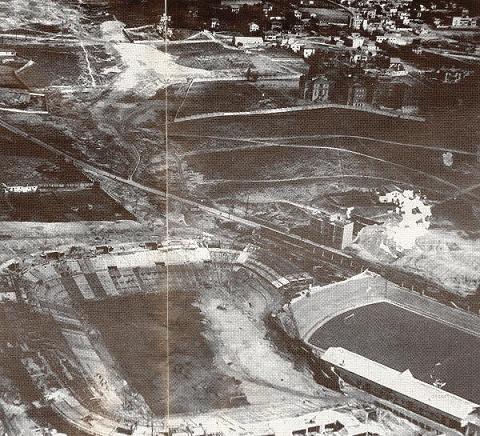Our class discussion focused on shrinking cities, the idea of
sustainability, and regenerative sustainability. Shrinking cities have common
characteristics -- a decline in population and jobs, increasing crime rates and
social failures, and a surplus of vacant or abandoned properties. Basically,
shrinking cities are too big for the resources they have. The sustainability
vision for addressing shrinking cities is a focus on people not just places
with a community buy-in and acceptance of a long-term commitment. Beyond this,
regenerative sustainability seeks to take the community actions to the next
level by using measures designed to reclaim, repurpose, urban greening, and
sustainable reuse.
A Smart City Radio podcast, "Shrinking Cities,"
provided three viewpoints with a national backstory, but yet demonstrate that
shrinking cities are a global issue. Specifically, the commentator, Carol
Coletta interviewed Thorsten Weichman of the Institute of Ecological and
Regional Development in Dresden, Germany, Christina Martinez-Fernandez, a
Senior Research Fellow at the University of Western Syndney, and Emmanuele
Sabot, a Research Fellow at Universite Rennes (France). Each of these experts
also plays a role in a global group studying shrinking cities.
The conversation began with Weichman and a discussion focused on
Dresden and other Eastern European cities as shrinking cities. He linked the
shrinking phenomenon to the changes occurring after the collapse of the Berlin
Wall. Specifically, he attributed the declines to the political change, the
change from a state-led economy to a market-driven economy, post-Socialist
pressures, and the globalization of markets. He also noted the significant
decline in fertility rates as well as the impact of aging on shrinking cities. Weichman
described that Dresden, like many other shrinking cities, held a strategy of
planning and political focus as one linked to growth versus a more progressive
focus on livability. City leaders needed to redefine success as economic
productivity versus the size of the population and expanse of real estate. He
provided the example of Dresden, a city with economic growth (GDP of 6% annual
growth) and a social security system but no job growth (unemployment rate of
15%). He stated the economy is doing well because of the industries there --
microelectronic technology, biotechnology, shipping, and even a VW plant.
Weichman stated that while lack of jobs may drive the young away, the brain
drain poses more risks. For the future, he states Dresden and other Eastern
European cities need to focus on organizing the transformation to more
investment in centrified city resources and move away from suburbanization.
Martinez-Fernandez defined shrinking cities as those
experiencing declines in population, jobs, or economic activity. She noted that
these occur on a continuum and in cycles and that a city might have these
separately or in combination with other declines. Martinez-Fernandez addressed
the issue of shrinking cities from a focus on the contextual situation of a
city. Using Australia as her examples, she noted four main factors causing
declines were: population movement from rural to cities, movement to coastal
areas, climate change, and issues related to economics -- industrial decline,
manufacturing issues, and fluctuation in minerals for mining cities. She also
noted the effect of globalization on these issues. Martinez-Fernandez, noting
that the previous four were not controllable factors, then described how
innovation was the controllable factor to foster a climate of growth,
prosperity, and wealth creation. With innovation, she believes a shrinking city
needs to establish networking to provide for the flow of knowledge in a
civic minded society. She amplified the need for creating a climate of competition
for new knowledge, which leads to innovation. In turn, Martinez-Fernandez
believes cities need to change their paradigm focused on growth to one of how
the environment provides a full life for its population through city vitality,
intellectual drive, and fun drive -- more happy citizens means more equity.
Sabot discussed her study of the urban decline in the United
Kingdom and France and found shrinking cities was not an imminent national
issue for either country. The larger cities like London continue to
experience a growing population due to immigration from Eastern European
countries. She noted these major cities continue to operate from a paradigm of
growth as census data over repeated decades indicates shrinkage is actually
declining due to immigration factors. However, Sabot indicated each
country experienced shrinking cities at the local and regional levels.
Specifically, she noted the decline in traditional manufacturing
and industrial cities as they shift to a service industry. Her study also
found that a smaller gap scale of shrinkage occurs in France as compared to the
UK. She referred to the shrinking of cities in France, mainly in places without
universities, as a silent process and states the national government may not
yet realize that shrinking cities exist. She addressed the idea that
connections matter, both transportation and infrastructure. It is the lack of
connections between small villages and the cities that contributes to their
decline. Overall, to address the issue of shrinking cities Sabot believes the
focus for the future requires public policy to focus on the reaction of the
communities towards the policies. To understand the policies, the local
community must understand them and their impact -- good for everyone or only a
part of the population.
Overall, the consensus among the three interviewed experts and
our class activities is that shrinking is not necessarily a negative. The
positive outcomes afforded, especially under regenerative sustainability,
ensure a healthy balance between socio and ecological factors in changing
communities.
Resource links:




